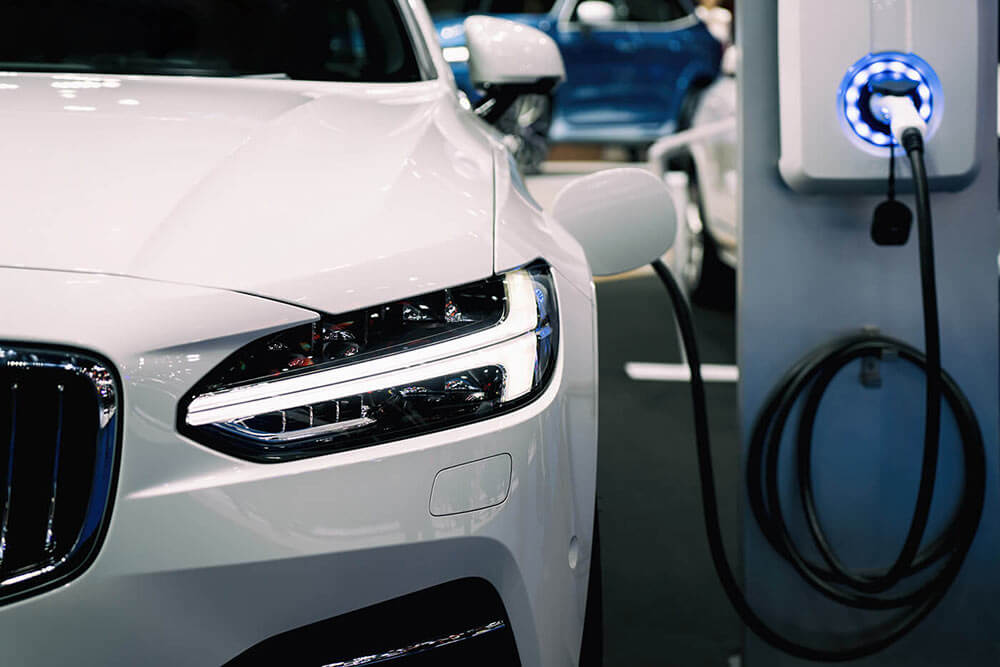
Switching from a gas or diesel-powered car to an electric one is a big step - but as technology improves, electric vehicles come down in price, and concerns about carbon emissions rise, it’s a change that many people are interested in making. Much like swapping a record collection for a digital music subscription or ditching a landline for a smartphone, living with an electric vehicle is different in a number of noticeable ways, but the payoffs might be well worth the initial hassle. If you’re considering going electric yourself, here are a few important things to keep in mind.
Why switch? Choosing your wheels Managing range anxiety Learning to drive, the electric way Charging at home There’s an app for that
Why switch?
Regardless of where you stand on the current state of electrified mobility, most people will agree that electric cars are likely to replace fossil fuel-powered ones in the decades to come. This is a good thing for smog-choked cities and global carbon emissions in general, but whether now is the time for you to take the leap is a bit more complicated. The technology that makes electric cars run is advancing quickly, meaning they are getting better and cheaper with every new model year, but you can still expect to pay a hefty premium for a new electric vehicle over a conventional internal combustion-powered one, even with the tax rebate offered by many provinces. There is also the cost of electricity where you live (and how greenly that electricity is generated) to factor into your decision.
Choosing your wheels
There are now dozens of electric cars on the market, from luxury SUVs to compact sedans and hatchbacks, with battery-powered pickup trucks on the near horizon as well. Aside from picking your desired type of vehicle and the features you’d like, the other most important thing to consider is its range. If it’s going to be your primary vehicle for commuting and running errands near home, you can probably get by with a lower range model. If, however, you’re going to use it for frequent trips to the cottage and other long-haul drives, you’re going to want to get something with an appropriate amount of range to get you there with juice to spare.
Managing range anxiety
Speaking of range, the most frequent complaint about electric vehicles is the “range anxiety” – the fear of running out of charge in the middle of your commute – that sometimes comes with them. This is a legitimate concern, but most EV owners will say it’s not as big of a deal as you might think. If you pay attention to your charge level and adopt conservative driving habits, you will likely find range anxiety dissipates the longer you spend driving your new vehicle.
Learning to drive, the electric way
EVs are all about efficiency, and how you drive can have a significant impact on your range. Keeping your highway speeds moderate, avoiding sudden acceleration, and taking advantage of regenerative braking can all make your charge go farther.
Charging at home
Charging your EV at home means waking up with the equivalent of a full tank of gas every morning – one of the things that many EV owners love most about their vehicles. Home charging, however, may require some additional cost to set up. The standard charger that comes with your vehicle will likely be a Type 1, which can plug into any standard 120V home outlet. What this offers in ease of installation, however, it lacks in speed – expect it to take the better part of a full day to charge your vehicle completely. Level 2 chargers, on the other hand, use a 240V outlet (the same as you’d plug your dryer into) and charge much faster, making this a popular upgrade for EV owners.
There’s an app for that
One of the best ways to get the most out of your EV is to make sure you’ve got all the right apps – and there are a number of them to choose from. Each charging network has their own (some of which let you pay for charging directly through the app) while others will help you find a charging station nearby across multiple networks. There’s probably also an app for your vehicle itself, which in addition to pointing you towards compatible charging stations, can be programmed to charge at home while electricity rates are low, and heat or cool your vehicle while it’s still plugged in, saving you battery power once you get on the road.
Jeremy Freed is a freelance writer and editor based in Toronto. His writing about fashion, travel, food and design appears in Sharp, Harry and re:Porter magazines, among many others.